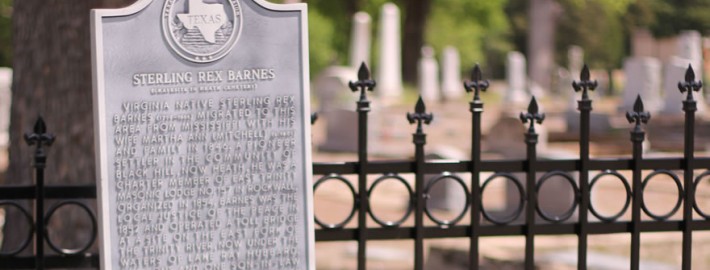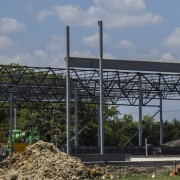Mayor’s Column
April 2013
We spend a great deal of time at City Hall looking at the future of Heath in order to plan and budget for the needs of a growing community.
However, when long-time Heath resident Clarice Smirl Isbell recently shared with me that the first building permit issued by the City in 1968 was for her home, it reminded me that there’s much to be learned from the past. So we dug up some more City artifacts and anecdotes. What we found was the commitment to creating a City that citizens can be proud of dates back to our founding fathers.
Like most Cities in Rockwall County, Heath was a farming community beginning with the earliest settlers in the 1840’s, who were attracted by the rich black soil of the area. In fact, the first name for the Heath area was Black Hills. In addition to fertile soil, there was an abundance of timber and water. The many willow trees that grew around the springs gave rise to the second name for the area: “Willow Springs”.
With our first post office in 1880 came the name Heath. It may be hard to imagine, but buffalo roamed freely where we now drive along busy roads. Each day at sundown, herds would run through the area that became Darr Estates. Children were alerted by the ringing of a bell to go inside until the buffalo had passed.
Residents formed the Heath Independent School District in 1902, and a school building was constructed on what is now the Heath City Hall complex. This was the site of many activities, much like we now gather for the Heart of Heath and Annual Holiday in the Park. Times could be tough in an agricultural community, and carnivals and other festivities were held throughout the year to raise money to help struggling families buy clothes, school supplies and other necessities.
As long-time resident and Rockwall County Constable John Cullins noted in records at City Hall, “Heath was always a community that took care of its own. We didn’t count on the government or anyone else for help.”
When the town population was 200 in 1949, the Heath school closed and merged with the Rockwall Independent School District. A few years later, residents got wind of the City of Mesquite’s plan to annex the Heath area. As Mr. Cullins noted, “A group of farmers had the foresight to quickly mobilize and start a City.”
The City of Heath was incorporated in 1959, but was a City in name only, as no taxes were collected and no services provided. Yet a sense of camaraderie and commitment to improving the community prevailed.
The creation of Lake Ray Hubbard in 1969 brought significant change. The old Barnes Bridge Road was covered by its waters, and land developers saw opportunity. Land prices that were once $100 per acre began to rise.
By 1970, Heath’s population was 520 and homes were being built throughout the City. Newcomers were attracted to the openness of rural and waterfront living. The need to pave roads and provide water, garbage and sewer service was pressing, and the City levied its first ad valorem tax of $0.25 in 1973.
“We had to have taxes to have the improvements,” said Teresa (Smirl) Lindsay, who was born and raised in Heath. “As long as we were going to keep growing, we were going to keep needing this revenue.”
Growth also spurred a focus on planning. “If we didn’t have control of the development like we have, there’s no telling how our City would be,” Mrs. Lindsay said.
The City of Heath continued to evolve into a professional organization led by elected officials, volunteers and paid staff. The current City Hall was built in 1983 during the tenure of Mayor Doug Hall. Dennis Watson was hired in 1991 as Police Chief and officially became City Manager in 2002. The police department transitioned into the current Department of Public Safety in 2000.
Garbage service became mandatory in 1986. A street system that included only a paved FM 740 and FM 1140 in the early 60s expanded to connect the neighborhoods that arose on former pastures and fields. Necessities like water towers and pump stations have been constructed. Parks and trails have been developed including Towne Center Park in 2002 and the Terry Park renovation in 2009.
Today, many of our elected officials and volunteers are multi generational Heath residents. Others are newcomers from the Dallas area and beyond. With this growth, wee still face that pressing need to improve and expand our services and infrastructure to be the City our 7,500 citizens want and deserve.
However we still want a community where we can call each other friends, and where we know our neighbors.
Mr. Cullins summed it up best before his passing in July 2012.
“Even though we’ve grown, we’re still a very personable community. Even if we disagree with each other, we still care about each other. This spirit is worth more than anything financial. It’s what we leave behind.”
Mayor Lorne O. Liechty









